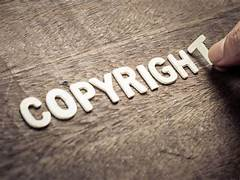Types of work protected under The Copyright Act 1957
- Narendra Dubey
- Sep 27, 2024
- 3 min read
Written by: Narendra Dubey, Galgotias University, 3rd Year Law Student
INTRODUCTION
A copyright is a bundle of rights that automatically gets assigned to an individual who creates an original piece of work, such as a literary work, song, movie, or software. These rights give the creator full control over how their work is used. For example, they have the right to make copies of their work, create new or adapted versions of it (known as derivative works), distribute copies of the work to the public, and perform or display it in public settings. Essentially, copyright ensures that the creator can protect their work from unauthorized use and gain recognition or financial benefit from it.
HISTORY OF COPYRIGHT
Copyright generally refers to the "right to copy" that belongs solely to the author or artist who created the work. Anyone else must obtain permission from the copyright holder before copying or using any of the listed works; otherwise, they risk being charged with copyright infringement. The Copyright Act of 1957 sets the rules to safeguard the exclusive rights of the copyright owner.
Copyright provides protection for published and unpublished literary, scientific, and artistic works. It grants the exclusive
right to perform or authorize certain acts in relation to original artistic creations, cinematographic films, sound recordings, software programs, etc. Copyright comes into existence as soon as the work is created, protecting both the skill and labor employed by the creator. However, as long as an idea remains in the mind, it cannot receive copyright protection. Once it is fixed in a form such as a notebook, drawing, or any other medium, it can be copyrighted.
Different types of works protected by copyright in India include:
Literary Work: This category includes books, poems, short stories, magazines, essays, dictionaries, manuscripts, periodicals, and articles. Software such as video games, apps, and other forms of software are also included.
Musical Work: This category includes compositions of musical notation and lyrics. It covers both the instrumental and verbal components, with copyright extending to the performer as well as the creator of the lyrics and music.
Sound Recordings: These are works created by the fixation of sounds, whether musical or spoken, excluding the sounds accompanying a motion picture or audiovisual work.
Examples include podcasts, recorded talks, and music on CDs.
Dramatic Work: This includes plays, operas, musicals, screenplays, and TV scripts, where characters interact and act out a sequence of events.
Architectural Work: This category protects buildings, architectural blueprints, and related drawings. Copyright covers the design of the building but not functional elements that make it habitable.
What copyright doesn't cover:
- Ideas, procedures, methods, systems, processes, principles, discoveries, or devices cannot be registered under copyright. - Speech or performance that is not recorded cannot be copyrighted.
Commonly available, non-original information cannot be copyrighted.
How long does copyright last?
For literary, dramatic, musical, and artistic works, copyright generally lasts for the creator's lifetime plus 60 years after their death.
Conclusion:
Copyright is important because it protects the value of an author's work, allowing them to safeguard it from unlicensed or uncredited usage. This helps prevent others from copying the work to the extent that the creator cannot profit from or be recognized for their creation. By offering such protection, copyright fosters intellectual creativity and allows creators to work freely, gain recognition, and secure their livelihood.
REFERENCE
1. WIPO(WORLD INTELLECTUAL PROPERTY
ORGANISATION)
3. NATIONAL INTELLECTUAL PROPERTY RIGHT POLICY
4. THE COPYRIGHT ACT 1957



Comments